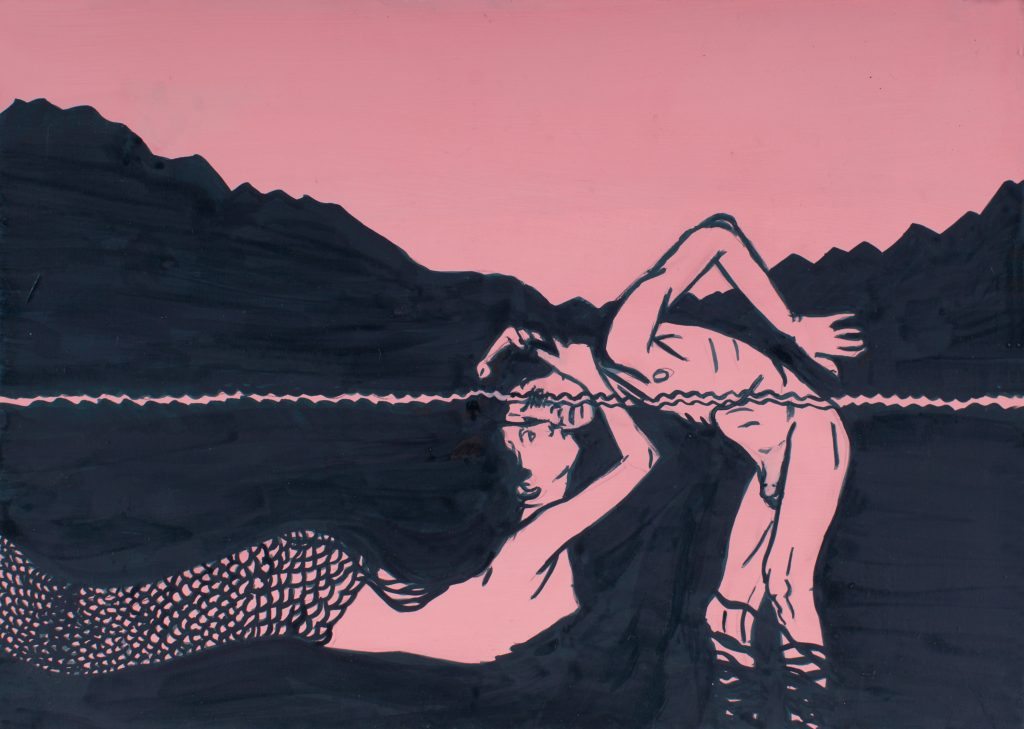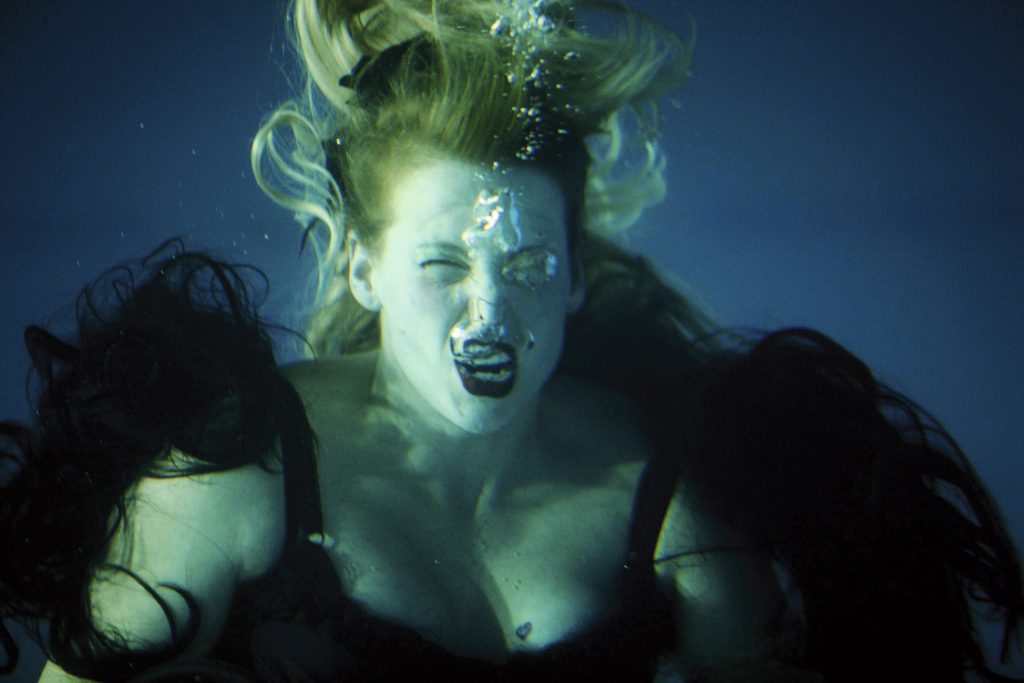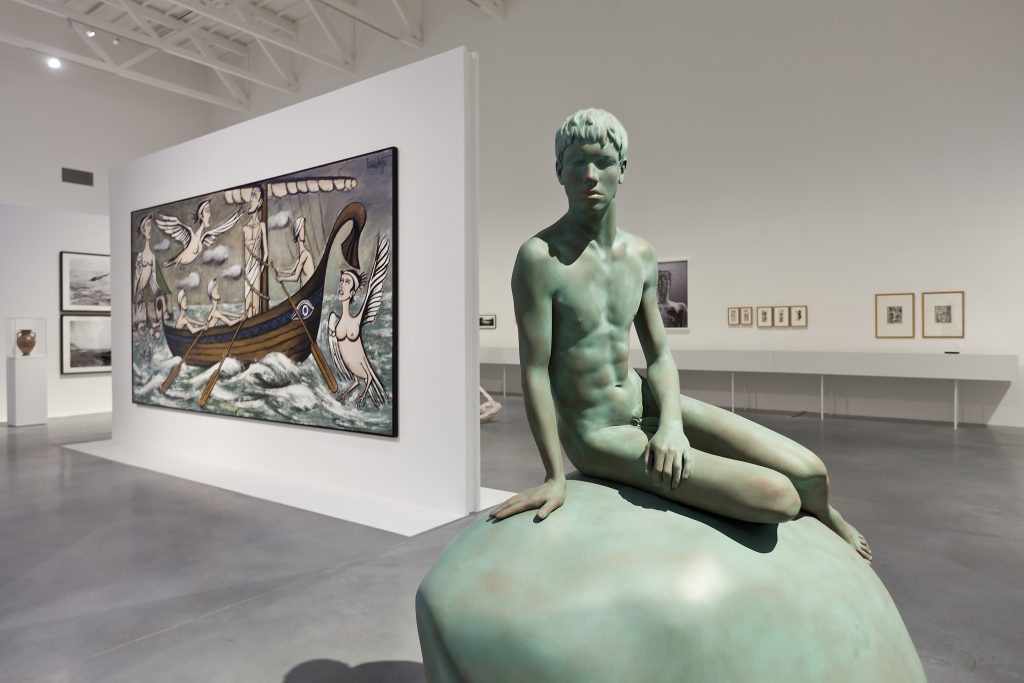The Museum on the Vistula- Mermaids in Warsaw? Hold on – the Polish capital is 300 km inland. And yet the star of its coat of arms is a mermaid… Perhaps she swam in from the Baltic Sea, up the Vistula river, lugging her sword and shield? If she comes ashore today, it might be by a new riverside gallery that she’d surely want to check out. The gallery is the Museum on the Vistula, opened in March by Muzeum (the short name for the Museum of Modern Art in Warsaw), and the show is called The Beguiling Siren is Thy Crest. If the mermaid can get past security with that sword, she would find it’s all about her, and the whole idea of mermaids across centuries right up to the contemporary.
The oldest item is 2,550 years, a Greek vase with a pre-mermaid siren image. We see mermaids in books from the 1400s. Fast forward to the late nineteenth century and we find the romantic fantastic Polish Symbolists painting them. A Siren and Tritons (1903) by the genre’s master Jacek Malczewski is exceptional – the mermaid seen half in murky water, half above the surface amongst great fishy forms.

Aleksandra Walienzewska’s exquisite gouaches, vignettes each depicting a mermaid fantasy, feel as if they come from other times – some classic surrealism, others with a fine book illustration aesthetic – but they were all made over the last eight years. Video, on the other hand, dates by the technology of the medium itself. Hannah Wilke is being dreamy to rock music in her black-and-white 1975 video Hello Boys, with fishes swimming in front of her. It is soooo obvious she’s filmed through an aquarium, not behind it! Unlike Wilke, Juliana Snapper actually gets wet in the video of her operatic performance You who will emerge from the flood (2009), set apparently half a million years from now. Sounds literally bubble from her mouth in her concept piece, which you sometimes feel is reaching for the levels of otherworldly staged weirdness of Matthew Barney’s Cremaster Cycle films.

How different things are on the dry land of the city. For example in Aleka Polis’ 2012 and 2013 videos which appropriate classical mermaid statues to support Pussy Riot, or fly a red flag while a street musician plays an old socialist anthem.
Wolfgang Tillmans’ overhead colour shot Lutz, Alex, Suzanne & Christoph on beach (1995) shows four friends curled together on the sand, dressed camouflage style and eyes closed and. The shot is beautiful, but conjures up ideas of dead soldiers as much as of mermaids. Then, there is the queerification of the mermaid, most clearly seen in Elmgreen & Dragset’s 2013 work He (Cooper Green). It replaces Copenhagen’s iconic Little Mermaid statue with a young man (not a merman – he’s got legs). Like her, his is a green coppery form, except for that tinge of pink on his lips. It strangely compliments Liz Craft’s Old Maid (2004), a mermaid of the same size. She’s now old, her breasts bizarrely distorted and stomach distended, but her great fishy tale still beautiful.

There are many other excellent works here, including some fantastic 1970s works by sorely-underrated London-born feminist surrealist Penny Slinger. A video by Marcello Zammenhof, Merman (2016) shows exactly how impractical that fishy tail can be. But as Snapper’s video title suggests, you will emerge from this flood of works at some point. The exit is through the café. On its wall, Tomas Sikorski has remade his 1985 neon A Little Mermaid, in which she throws away her sword and shield. The gesture was identified with Solidarity’s overthrow of communism. Dark history is never far away in Poland, but this is a bright, exuberant part of it.
And there’s one more stunning work outside, too. Jerzy Szumczyk’s The Warsaw Mermaid, a 1950s car with a crazily pimped-up engine rising metres out of the bonnet. Szumczyk attracted controversy in 2013 with a statue of a Soviet soldier raping a pregnant Polish woman in 1945. Here, he addresses something else from Polish history. That car was known as the Syrena (Siren), made in Warsaw during communist times.
The Beguiling Siren is Thy Crest is a huge curatorial achievement (by a team under director Joanna Mytkowska). It touches on issues from politics and nationalism to beauty and sexuality. It highlights Polish art but its net spreads to the US and China. Not least, by offering a survey on the theme across centuries, it gives a deep backdrop to the modern art, which we normally see without any of the cultural narrative it may follow or reject. If our mermaid saw this show, she would slip back into the water and reflect on how amazing her journey has been. This is a show worth surfacing in Warsaw for.
The Beguiling Siren is Thy Crest is at Museum at the Vistula, Wybrzeze Kosciuszkowskie 22, Warsaw until 18th June. Free entry. Opening Hours Wednesday – Tuesday-Thursday 12 noon -8pm, Saturday 11am-8pm, Sunday 11am-6pm





